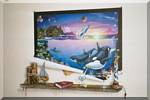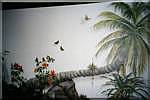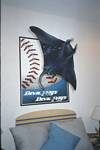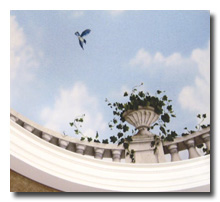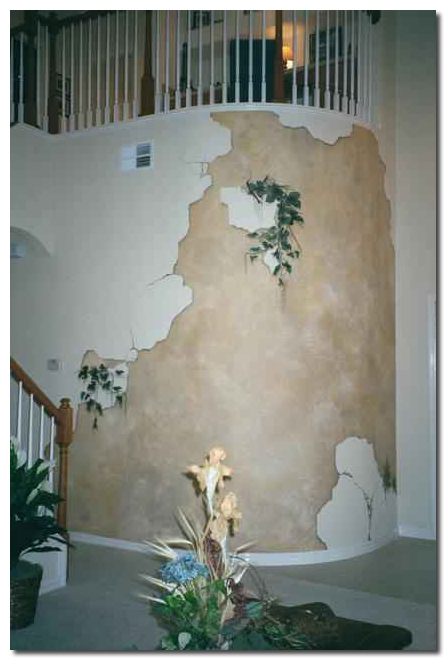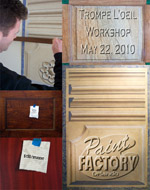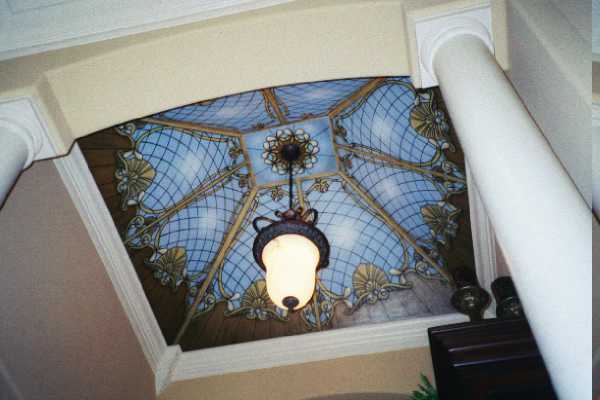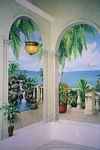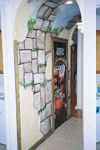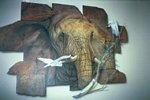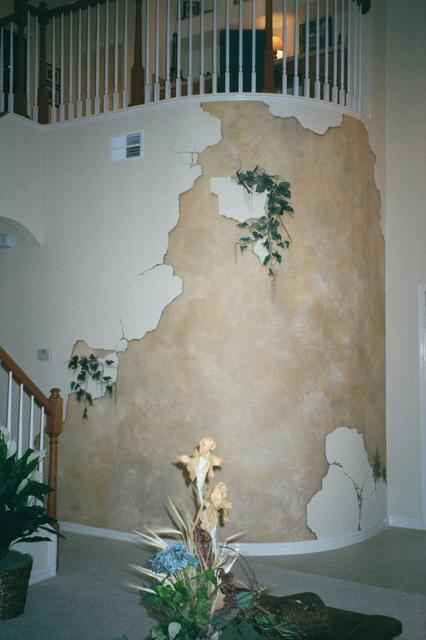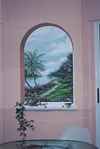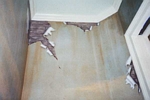Trompe L'Oeil by Art Effects...
Trompe l'oeil murals are paintings that create
an illusion that fool or trick the eye.
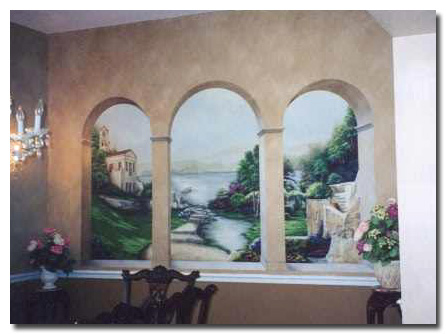
Art Effects' greek window Trompe l'oeil Mural
Trompe L'Oeil
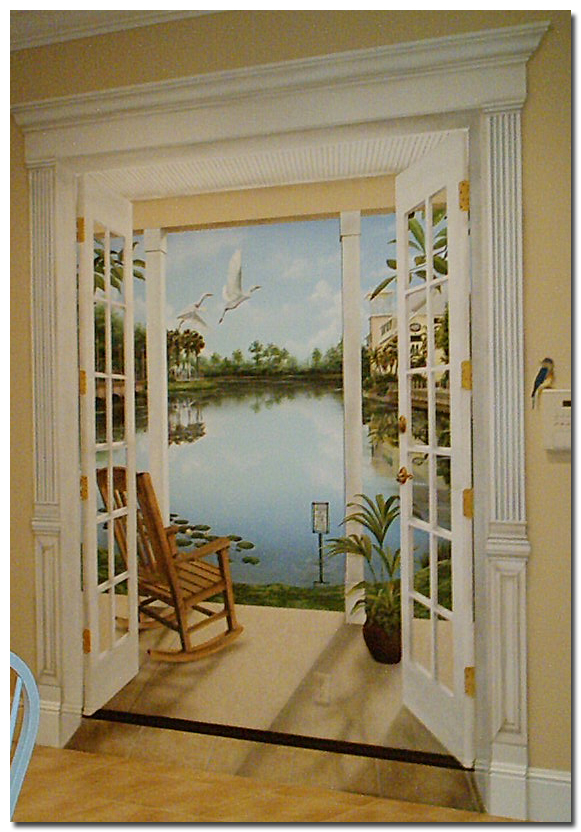
Trompe l'oeil french doors
...mural looking out
*everything is hand painted*
Come visit our store on CafePress!
A store for artist by artists.
A store for your artist' gear and gifts!
Trompe L'Oeil Murals and Art Effects
Throughout this web site you will see murals with
trompe l'oeil effects painted using faux finishes to create
an illusion
that fools or tricks the eye.
Trompe L'Oeil...the name given to the style of painting
which achieves the sense of being three dimensional. In other words the
painted object is suppose to "trick" the viewer into believing the object
is actually real. From the french word Trompe L'Oeil,
pronounced "trum ploy" its meaning translates "to deceive the eye",
literally...
"to trick the eye" or "to fool the eye".
What you see is not always what you get.
Maybe trompe l'oeil can be considered the
decorative artist's ultimate gag or trick,
and trompe l'oeil artists perform these tricks with paint.
"Art Effects... Putting The Trick, In The Trompe Of Trompe L'Oeil"
Along with techniques in
faux finishing,
Art Effects uses skills in trompe l'oeil
to create imaginative
wall murals in the decorative arts.
Although most of our painted murals and artwork containing
trompe l'oeil are very realistic, realism is not always necessary for a mural
or piece of art to accomplish
"The Trick".
In trompe l'oeil the viewer must only be
deceived or tricked for a moment.
Trompe L'Oeil..."To Fool or Trick The Eye"
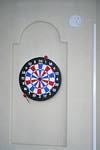
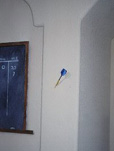
As in our
"trompe l'oeil dart board"
for example, one might notice the dart board is actually painted,
disregarding the dart stuck in the wall.
Once the trick is realized
and the viewer figures out the dart is painted also,
something so simple becomes entertaining.
In other words the instant the deception
or trick is realized actually becomes more of an impact
than the artwork itself. This is what makes a painting,
a trompe l'oeil...the trick and deception,
the moment the viewer is fooled.
A Little History on Trompe L'Oeil
History shows that the Art of Trompe l'oeil Painting
has been used for over two thousand years and as a painting style
dates back to 400 B. C. Although ancient trompe l'oeil works
are lost, descriptions of these paintings have been passed
down through history. Today the earliest murals of trompe l'oeil art
that exist can be found in the ruins of Pompeii and Eurculaneum
and have been dated back to the first century A.D.
After becoming part of the rich culture of the Greek and
Roman Empires, trompe l'oeil art all but disappeared
during the Dark Ages, not to resurface until the Renaissance
and Baroque eras. After the discovery of perspective in the
fifteenth-century, the trompe l'oeil style in mural painting flourished.
Trompe l'oeil artists used these techniques in perspective to create false
openings like doors and windows. In Europe this form of
three dimensional art on a two-dimensional surface
was used extensively by the wealthy and clergy.
Churches and grand cathedrals became a common place for
trompe l'oeil paintings to be used, giving these houses of worship
the appropriate splendor they deserved.
The walls and ceilings of palaces, villas and homes of the rich were
decorated by artists and muralist with trompe l'oeil paintings,
opening the rooms to a grander scale.
Trompe l'oeil architectural elements,
like columns, pillars and
arches
were painted adding to the richness
and sophistication of their interiors.
Look through the pages below for
some of our Art Effects...murals, faux finishes with effects
and other examples of trompe l'oeil art that fools or tricks the eye.
Can you be Tricked with our Trompe L'Oeil???
